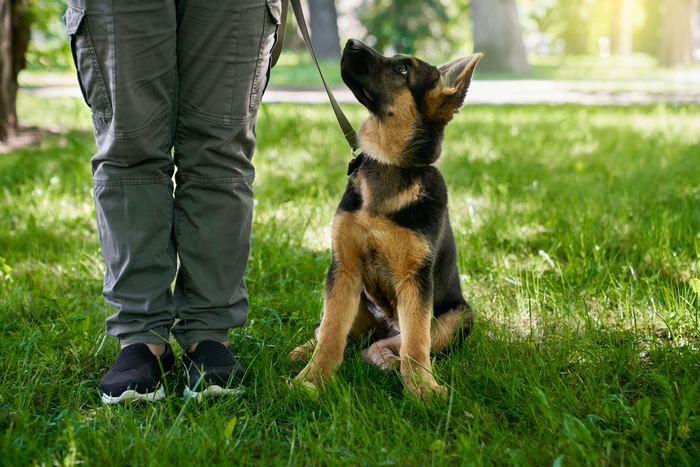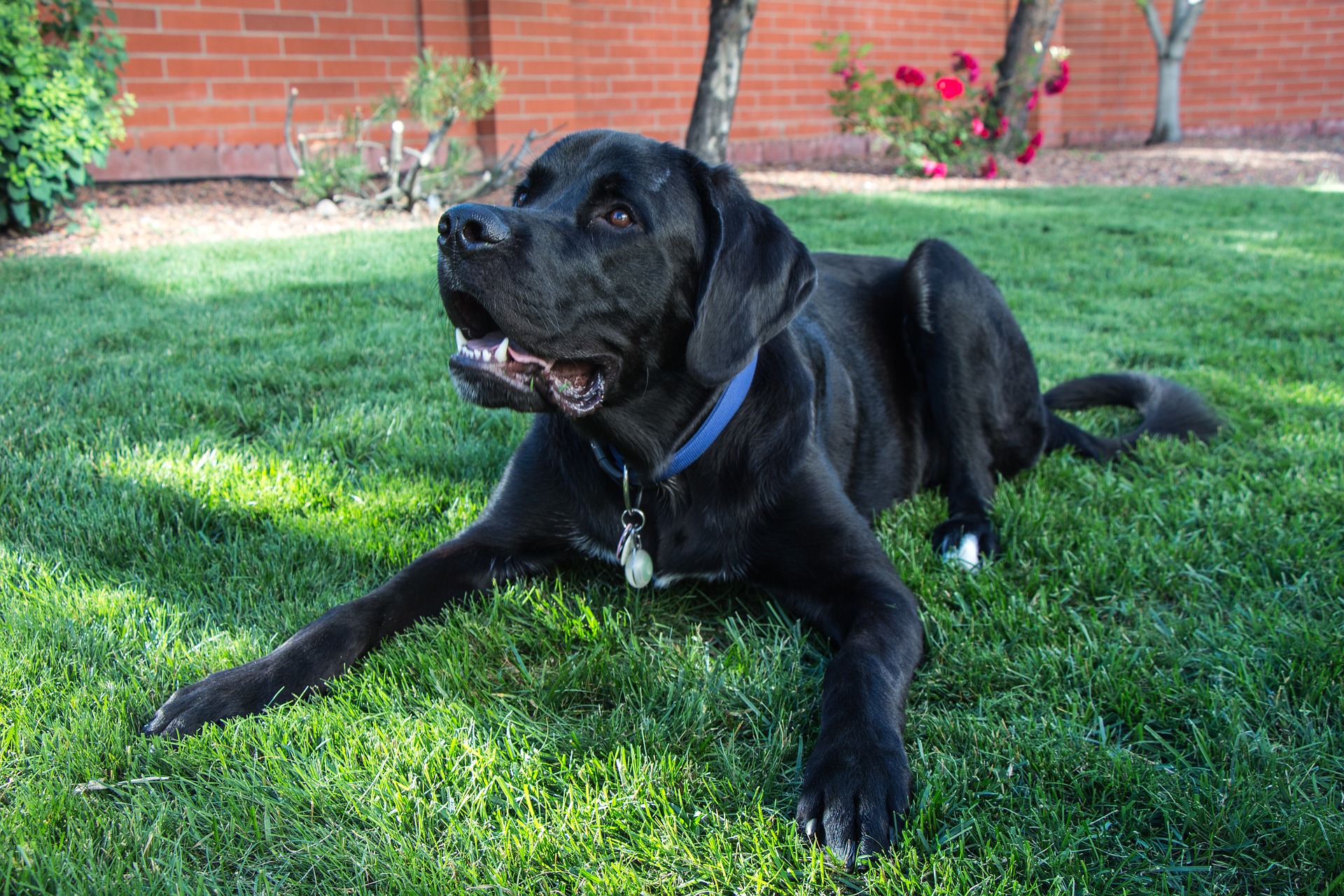
Post-traumatic Stress Disorder is a disorder that can occur when a person experiences a traumatizing, shocking, and/or dangerous event. The fright that an individual might experience during such type of event, can trigger their body to make sudden changes as a defense against the danger. Approximately 60% of men and 50% of women are likely to experience at least one traumatizing event in their lives. There are certain factors, that can increase the possibility of a person to develop PTSD, i.e. if an individual is directly exposed to a traumatizing event or injury. Most of these factors are unfortunately not under the person’s control. In order to deal with PTSD, many people take medication and go through therapy and supportive care treatment. Some individuals also decide to rely on the help of a service animal, to additionally improve their mental health and general well-being.

What Are Service Animals for PTSD?
Service animals are dogs who go through individual training to learn to perform specific tasks for the benefit of a person with a disability. Under “disability” it is meant both physical and mental impairment and the tasks that a dog has been trained to perform must be directly related to that impairment.
Service dogs for PTSD in particular, have been individually trained to do specific work to mitigate the symptoms of this disorder. Service dogs who perform tasks to help people with mental disabilities, including PTSD, anxiety, depression, schizophrenia, bipolar disorder...etc., are known as Psychiatric Service Dogs.
Symptoms of PTSD
Common symptoms of PTSD are:
• Intrusive images;
• Distressing memories;
• Flashbacks;
• Repetitive (harmful) behaviors;
• Detaching from reality;
• Nightmares;
• Emotional distress;
• Avoiding places, objects, or anything related to the traumatizing event;
• Difficulties with being focused and concentrated;
• An overwhelming feeling of shame or guilt;
• Physical symptoms such as trembling, pain, and sweating;
• Heightened arousal;
• Suicidal thoughts.
How Can a Service Dog Help with PTSD?
Based on the symptoms and person’s needs a service dog can be trained to perform various tasks, both alert tasks, and response tasks. Through alert tasks, a service dog notifies a person, that something is about to happen, while response tasks are related to action after an episode has already occurred. In other words, alert tasks are a sort of warning to an individual, as they are not aware, of what is going to happen; response tasks are a kind of “response” to something that has happened.
Service dogs can be trained to recognize a specific scent that their owner gives off when they are having an episode or a specific behavior that they perform right before having an episode. Once they recognize that an episode is about to occur, service dogs exhibit a certain behavior. This behavior can include nose-nudging, pawing, licking, laying in the owner’s lap / putting their chin on the owner’s lap (Deep Pressure Therapy), or other types of tactile stimulation. Actually, this behavior can be everything, that works for the specific person. Through alert tasks, an individual who is about to experience a PTSD episode can take immediate action, i.e. sit/lay down, find a safe place to go, take medication, take a phone...etc. Alert tasks can also be directed to a third party, i.e. notifying a family member that the owner is about to have an episode.
Response tasks can be various, including:
• Retrieving items;
• Providing tactile stimulation / Deep Pressure Therapy for calming effect;
• Dialing 911;
• Guiding the owner to a safe place;
• Interrupting repetitive behaviors;
• Grounding the owner (bringing them back to reality);
• Waking up the owners from nightmares;
• Reminding the owner to take medication;
• Environmental tasks, such as opening/closing doors, and cabinets, turning off/on lights, pulling curtains...etc.
Service dogs can be trained to do so many tasks to assist a person with PTSD or other types of mental disabilities.

How to Get a Service Dog for PTSD?
You can either get a trained service dog or get a dog and then train him/her yourself and get him/her trained with the assistance of a school/trainer.
1. Getting a Trained Service Dog
Let’s take a look at the first option, namely receiving a trained service dog. This looks very simple and effective-you won’t have to engage in training a dog, but professionals do this work for you. However, there are several issues that you are likely to experience, if you opt for this option, namely:
• You will need to go through an application process. This means that first you must be approved by the organization that provides trained service dogs for your disability;
• You will need to pay a lot. Once you get approved, you will need to think about how you will cover the costs for a service dog, since these are likely to reach thousands of dollars (sometimes more than $30.000). Fortunately, some organizations provide applicants with the opportunity to receive funding support or raise funds for themselves;
• You are likely to be put on long waiting lists. There are organizations that provide trained service animals at no cost. However, the waiting lists for these dogs are usually long and may reach up to 3 years or even longer;
• You won’t have any emotional connection with the dog. Once you get a trained service dog, he/she will have already spent at least 2 years being raised and trained by the members of the organization. The dog will already be prepared for the work he/she will be supposed to do...but will you? You will have to learn to interact with the dog and keep up with his/her pace since at the beginning, he/she will be more “trained” than you. Also, you will have to develop an emotional bond with the dog, as this is essential for successful service-dog partnerships. Many organizations provide ongoing support after a service dog has already been matched and housed with a person. However, you still will need to do a lot of work.
Let’s discuss the second option, namely to get a dog and then consider training options. If you opt for this option, you basically have two ways to go:
2. Getting a dog and having him/her trained by professionals;
3. Getting a dog and training him/her yourself.
Enrolling your dog in a group class, boarding school, basic obedience class, and then in a specialized program, or directly hiring a trainer will be more affordable than option 1, but it still is very expensive. Intensive programs, that take a long time, can also cost you a few thousand dollars or hundreds of dollars per training hour with a trainer. There will be benefits though-your the dog will be handled by professionals, you will be more engaged in the training process, and you will be able to receive support as needed. There are several factors, you should consider here:
• Choosing the right dog-not all dogs have the right temperament for the job; also, you will have to consider factors such as breed, size, energy level, needs for physical and mental stimulation, barking tendency, drooling level...etc.;
• Is the program the right one for your dog;
• Does the training approach suit you and your dog;
• What qualifications do the trainers have;
• How much will it cost;
• How long will it take?
You should do thorough research to make sure that you are making the best decision for both yourself and your paw friend. If you decide to train a dog yourself, here are a few things, you may want to know:
• It will help you spend valuable time with your dog and know each other better;
• It will strengthen the bond between you and your dog;
• You will be able to work on the tasks, that will be most beneficial for you, based on your needs;
• You will be able to practice at your own pace;
• You will be able to practice regardless of the location.
All these things listed above sound great, but owner-training a service dog, is not an easy task, and you will need to:
• Choose the right dog;
• Be patient;
• Be consistent;
• Be disciplined;
• Already have or develop skills to use the right approach for your dog;
• Understand that training a service dog is a lifetime process;
• Check your local regulations and if owner-trained service dogs are recognized.
A good option for those of you who want to train their dogs themselves is enrolling in a program, that will bring you the flexibility of owner-training, but will also provide you with structured lessons and tutor support.
How Long Does It Take to Train a Service Dog for PTSD?
Typically, organizations that provide trained service dogs, engage in animal raising and training for about 2 years. During that time a future service dog is being potty-trained, socialized, trained in basic obedience, and finally trained in performing specific service dog tasks. As mentioned above, you may need to wait for a trained service dog for several years.
The duration of training a pet dog with an organization/trainer depends on the type of program that you want to participate in, or the intensity of the private sessions if you hire a trainer. The intensity usually depends on how busy their schedule is and what their prices are.
If you decide to conduct self-training, you will need to clear up where you will get the needed learning materials. If you will entirely rely on the materials available on the internet like YouTube videos or lessons free to use, it may take quite a long to train your dog. The lack of structure and support by professionals may cause you to go back and forth in training, not knowing what tasks/skills you might need to work harder on, or how certain behavioral issues can be addressed. This of course will make the training process much harder and longer. That is why enrolling in a training program, that combines the advantages of self-training and receiving support from tutors might be a very good option.
Speaking about how long service dog training usually takes, you should keep in mind that training does not stop once you finish a program or reach a certain level of performance. Dog owners must always invest time and put effort into maintaining the training progress of their dogs and themselves as handlers.












